I tested the Google Pixel Watch 2 and Fitbit Charge 6 at a SoulCycle spin class, and I'm hooked
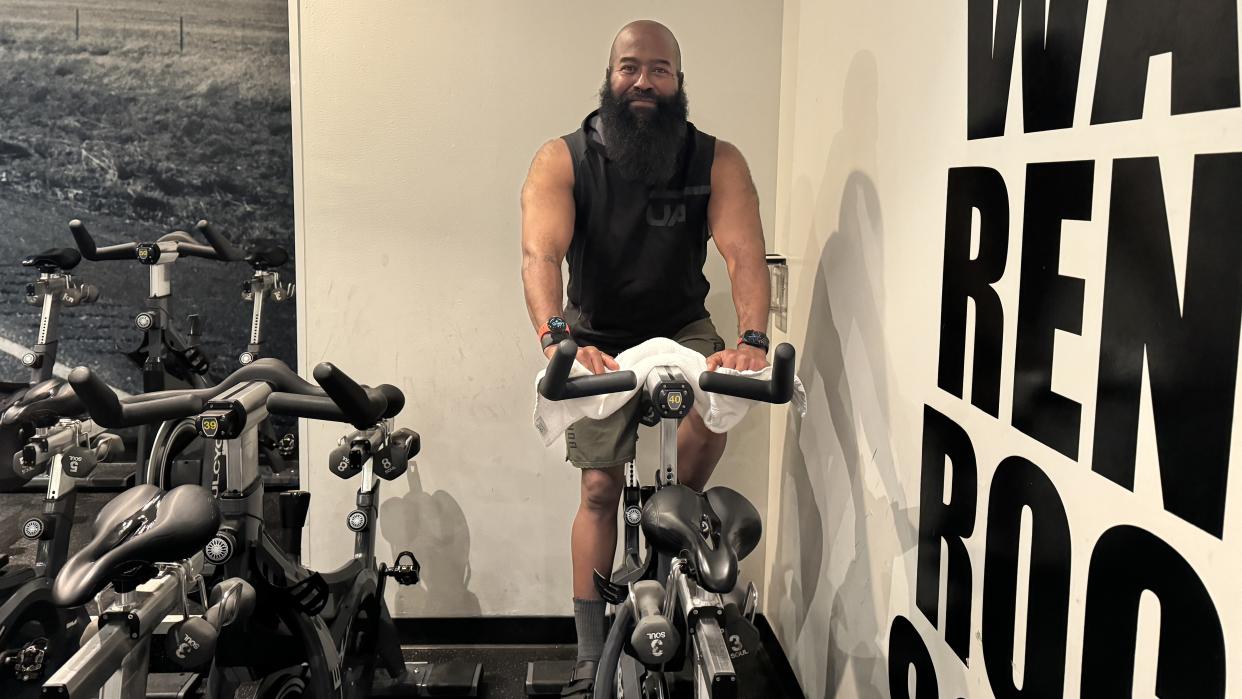
At the moment that I’m writing this, it is the first day of February. “What’s so special about that?” you say. Well, it’s not that it’s Black History Month, though, that is important. It isn’t that it’s American Heart Month, National Cancer Prevention Month, National Self-Check Month, National Wedding Month, National Cherry Month, National Grapefruit Month, Canned Food Month, or National Pet Dental Health Month.
Nay, my friends! It is the time of the year when many of you have already given up on that New Year’s resolution, which quite often involves “getting in shape.” Round is a shape, right?
For those of you still at it, first of all, you’re doing awesome! Just showing up is half the battle. Fitbit, along with SoulCycle, wants to help keep people motivated year-round, so they teamed up to offer a special promotion toward the end of January, which extended into the first week of February. You can win a free class and chances to win (or get a $50 discount on) one of the best smartwatches on the market, the Pixel Watch 2, and one of the best trackers, the Fitbit Charge 6.

So, I was commissioned to put the Fitbit Charge 6 and Pixel Watch 2 to the test and see how they handled the sudden changes in heart rate in a high-energy, frenetic spin class. That was the point of this whole thing initially, but what I found was something much more important!
For me, these types of classes always looked silly in those commercials online and on TV. People darn near jumping around in that stationary bike saddle like it’s rodeo aerobics on a steel horse, more so than any "hardcore" cycling! But what I found was that it's kind of both. Yes, you bop around, up and down, but damn, do you pedal your fat away, and the group dynamic makes it all the more fun. You truly put Einstein’s Theory of Relativity into practice because that 52 minutes goes by in a heartbeat! Very rapid heartbeats.
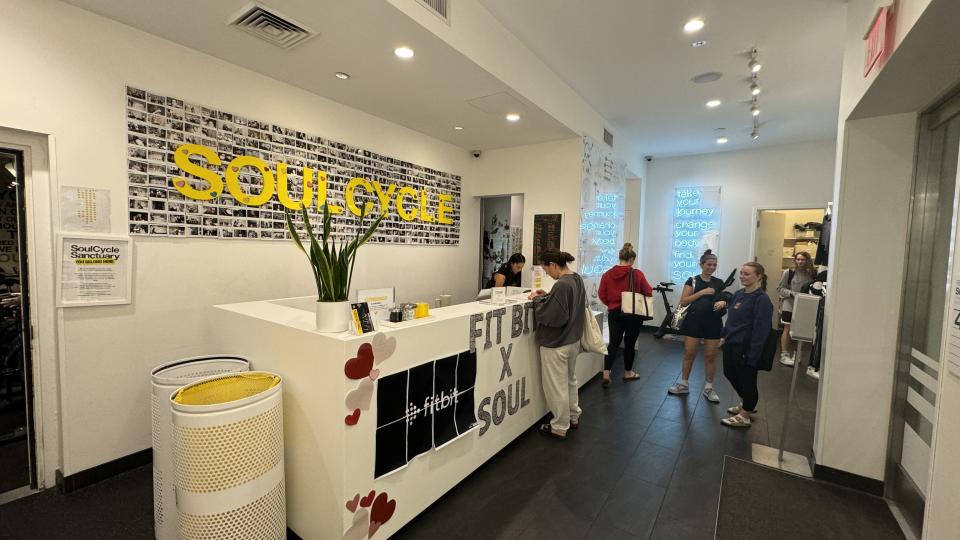
When you first walk into SoulCycle, you’re greeted by a friendly, knowledgeable desk staff. They walk you through the facility amenities (it’s quite nice), showing you the locker area, the well-appointed men’s room, complete with showers, and finally, the studio. The Brentwood location isn’t huge. I have an LA Fitness membership, and their signature club spin rooms are larger. SoulCycle’s was “intimate” by comparison, but that may be by design. I think that, ultimately, it fosters an intimate group ride experience.
Speaking of, let’s get to that! Just like when you go bowling, SoulCycle has shoes that you can rent. These are cycling specific clip-in shoes which use the Look Delta cleats standard, though their pedals are dual-sided so they’ll also accommodate your SPD cleats (Shimano Delta Cleats), if you already own a pair of those. The rental shoes use velcro straps, not any lacing, so they’re very easy to get into.
Once my feet were properly adorned, one of the helpful staff walked with me into the room and helped me set up my bike, this being my first time and all. He then showed me how to “clip in” to the Look Delta pedals, and with that, it was time. I got on the bike and waited for the instructor, Lo, to get the class started. While I waited, I swiped through the interfaces on my Charge 6 and Pixel Watch 2 and started the Spin exercise on both.
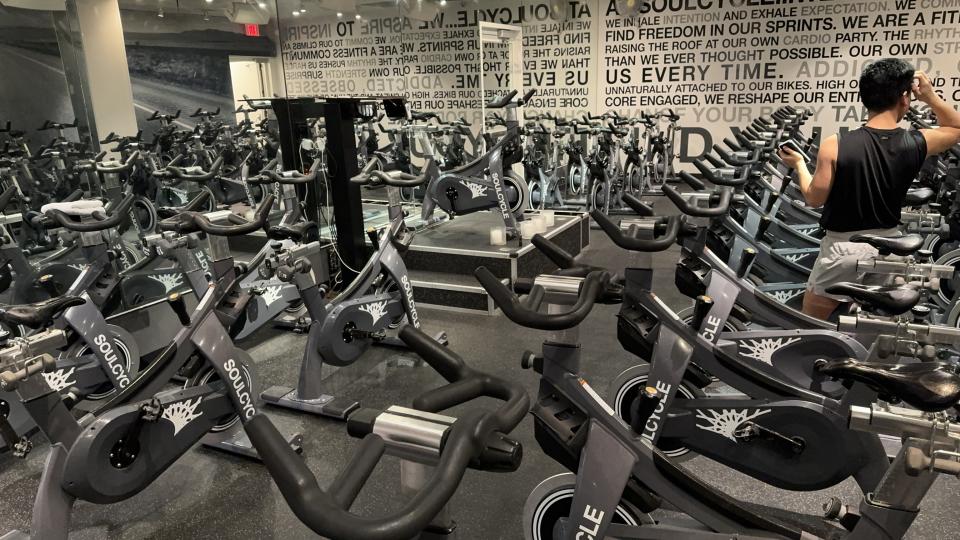
After activating the Spin exercises, I noticed that some of the folks in the room were “warming up” by pedaling slowly, so I followed suit. Plus, I’m not 20 years old anymore, so warming up these knees and ankles seemed like a good idea!
While warming up, Lo called the class to attention, started the music, and took us all through a warm-up spin. Once we were warm, she ratcheted up the intensity and took the class through 50-some-odd minutes of what was essentially high-intensity interval training on a stationary bike. This was perfect for testing these fitness wearables because, as I’ve noted in previous video reviews I’ve produced, some wearables can be as much as 30 seconds behind when your heart rate is rapidly changing during high-intensity training. I’ve generally showcased this by taking you through my stair running interval training. I’ve included screenshots of my heart data in the gallery below so you can compare the Charge 6 HR recording to the PW2’s recorded data.
As you can see, the wearables were in lockstep with one another, except for one thing: for the first few minutes, I didn’t have the Charge 6 tight enough on my wrist, so it wasn’t consistently measuring my heart rate. I was wearing both devices on my right arm to be sure the results were as accurate as possible, and the placement and fit were a bit odd. But, once I tightened up the Charge 6, as you can see in the graphs, the data between both was well in sync.
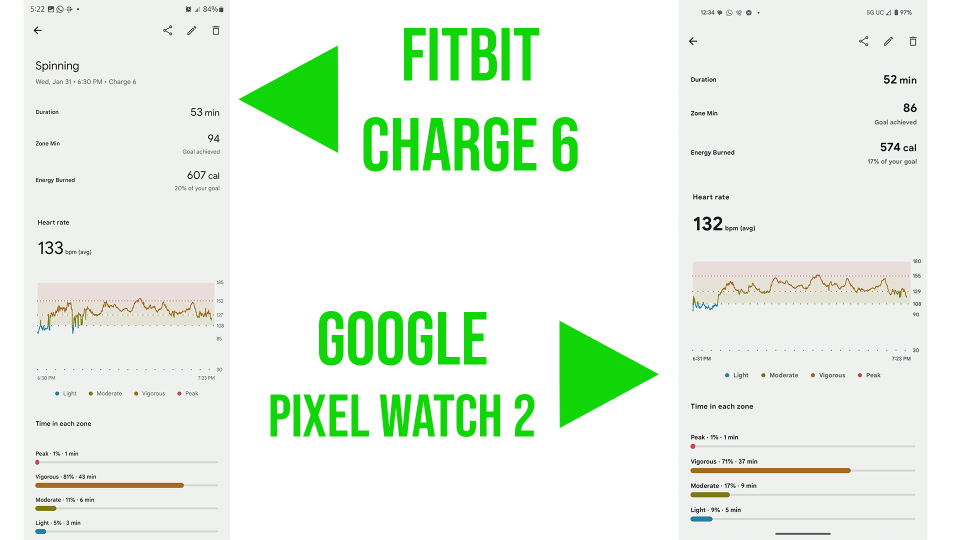
My main takeaway from these graphs and looking at the watches in real-time as I was riding or bouncing in the saddle was that these heart rate sensors in this generation of devices stand up to Fitbit/Google’s claims that these are some of the most accurate they’ve put in a device to date.
They did indeed track with the intervals, checking heart rate every second, and I’m sure those improved machine learning algorithms help with that quite a bit.
No waiting up to 30 seconds for them to record a sudden increase in my heart’s beats per minute. I was also wearing my Apple Watch Series 9, which I’ve found to be quite accurate, and both Google products were in agreement with it.
Some data points also worth noting on the graphs above are my heart rate zones. I spent nearly 40 minutes in zone three (Vigorous), and that’s an important thing to note. Why? Because that’s where something important happens: you are increasing your anaerobic capacity — or your heart's endurance, to over-simplify it. Combine that with some long workouts in the Moderate zone, and you’ll raise something Fitbit calls your “cardio fitness score,” aka your VO2 Max.
Current studies show that your VO2 Max level may be a better indicator of your future morbidity than many other disease indicators. I’ve written about this in detail elsewhere, but the short of it is this: do long workouts in the Moderate or "easy" zone, and you’ll increase your body’s efficiency by utilizing oxygen while you work and burning energy from your fat stores instead of carbohydrates. You'll literally be changing your body at the mitochondrial level. Then do interval workouts in the Vigorous zone, and you’ll increase your overall capacity for work or your endurance.
Both the Pixel Watch 2 and Fitbit Charge 6 were able to similarly determine my heart rate zones during the workout, which is an important metric when factoring in VO2 Max.
Both of these will lead to higher VO2 Max numbers, which ultimately means you’re building that heart muscle in the same way that when you’re lifting weights, bench press, for example, and lifting progressively heavier each week, you’re going to make your chest bigger and stronger.
And if you’re really tracking such things, your actual zones will change over time as your heart gets stronger. The work it used to take you to get to Moderate and Vigorous will no longer be enough. It’ll become too easy. What used to be Vigorous for you will become Moderate, etc. More importantly, though, you’ll actually be retraining your body to burn fat more efficiently, as there’s a direct correlation between VO2 Max efficiency and efficient fat burn.
When you’re first starting out, you may only burn a small percentage of overall calories from your fat stores. As that V02 Max number increases, you’ll actually begin to burn higher percentages of energy from fat stores than you were before. That’s what happened to me at the beginning of 2023 when I increased my VO2 Max by just 5 points under the guidance of Aishea Maas, exercise physiologist and director of science at the Phase IV Olympic-level training facility in Santa Monica, California.
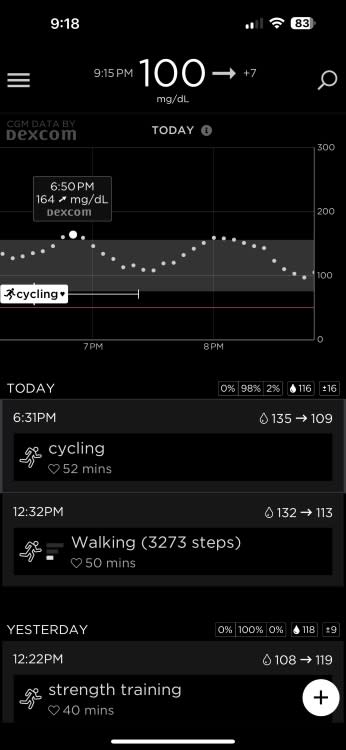
For those of you newly diagnosed sugar momma and sugar daddies — no, not that kind — who deal with some form of diabetes, this chart is a really good indicator of the different types of exercise and how they affect our blood sugar. See that spike that plateaus at 164 mg/dl? That was caused by the weights we used during the spin class. I know, you’re thinking, “It’s a spin class… weights?” Yes, each bike in the SoulCycle spin class has a set of those cute little soft touch-coated dumbbells. You know, the ones you can get from Target in the pretty colors. You can choose from 3lb, 5lb, 8lb, or 10lb dumbbells at the beginning of class, and they slide into a little holder on the rear of the bike’s seat post.
It’s actually pretty smart that they include a little upper-body workout to balance out the leg workout that the spin class puts you through. Everyone’s body is different, but generally, a free weight workout with dumbbells or barbells will spike your blood glucose more than a simple walk and sometimes even more than the stress of a HIIT workout like the one we did on those bikes that night. In this case, that spike was likely a combination of both activities, with the free weights exacerbating the spike.
The good news is that you can also see how quickly I spiked and then how quickly my blood glucose came back down, which is what you want to see with any spike. This is an indication that your body’s insulin sensitivity is looking good, all things considered. That reading came from my Dexcom G7, which is connected to my Pixel 7 Pro. My Pixel Watch 2 does have a complication for it as well, through the Blose app.
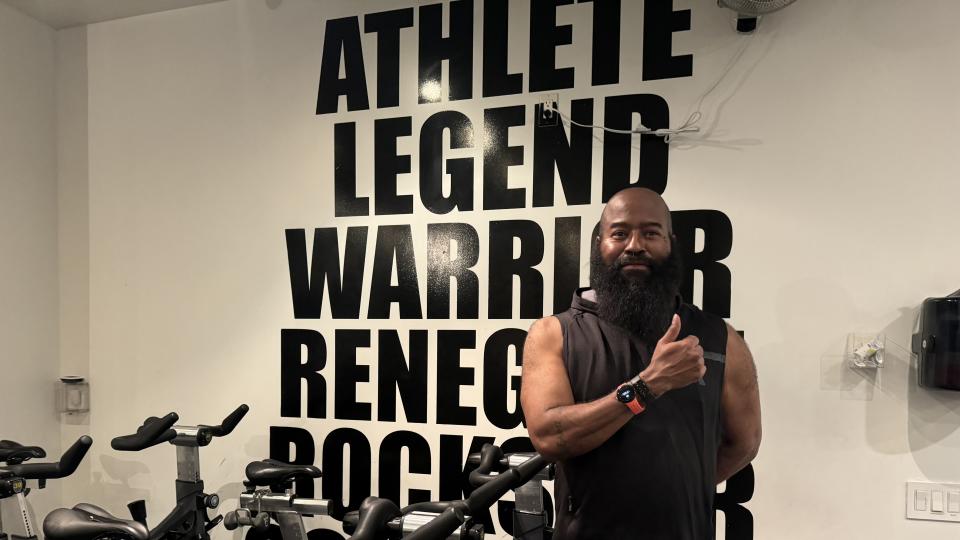
You know what else was looking good? Me. After that class. What’s more, I felt great! Especially given the fact that the class was at 6:30 pm, and I’d been up since 2 am. At 6:30 pm, my 16th hour being awake, I was exhausted, but I can honestly say that after the class, I felt invigorated, like I’d caught my second wind.
And that made me want to go again! As a matter of fact, I posted my results in a private group chat I’m a part of on WhatsApp — an accountability group for folks working on their fitness- and I had others who asked to go with me the next time I venture into that frenetic den of spin.
And, at the end of the day — literally — both wearables performed quite well in that indoor spin class environment, with heart rate tracking that was pretty accurate and kept pace with my rapid changes in heart rate. For this particular test, I can’t say that there is a clear winner in terms of the very specific activity I was engaging in that evening. What I can say is that both devices are winners in their own right, and it really is up to what you need or want in a fitness wearable.
We assume that everyone automatically wants all that a smartwatch has to offer, but that isn’t the case. There are plenty of users out there who just want the best fitness tracker without breaking the bank. Or even fracturing it a little.

